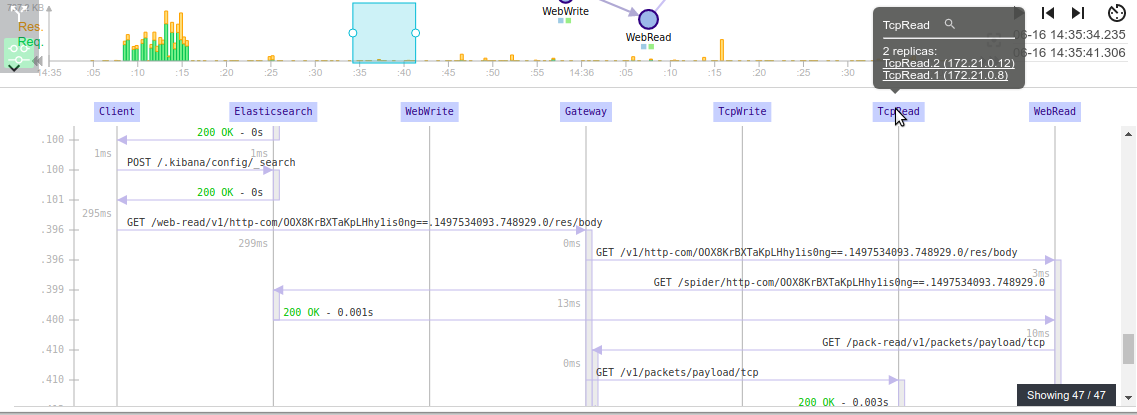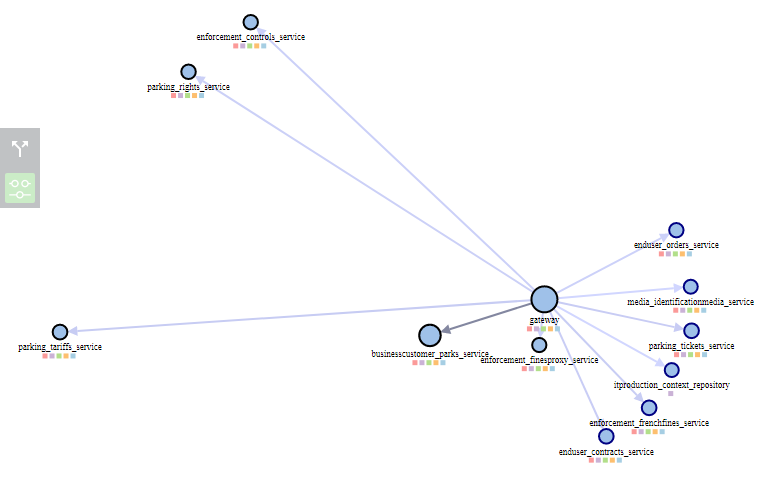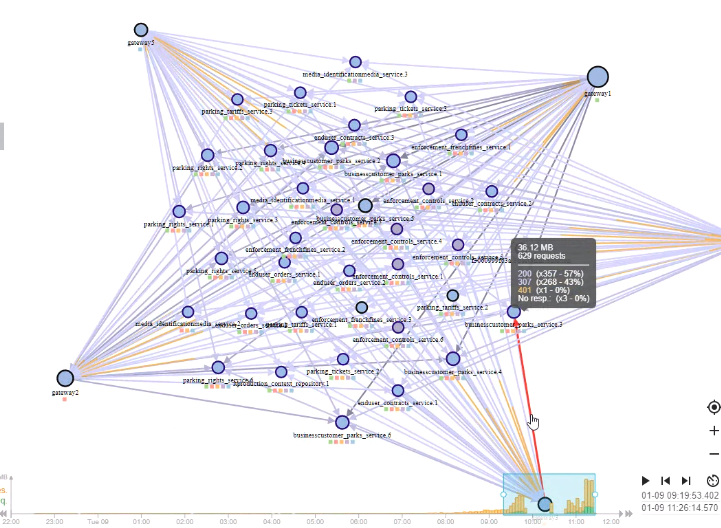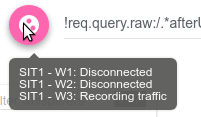When I saw production map I got afraid. And Allan feedback was on same trend: it is unusable as is. Too many nodes!
So I reacted quick and here comes a new feature: merging replicas. It is now possible to merge replicas of same application on the map.

Before (note the multiple instance for tickets and rights):

After:
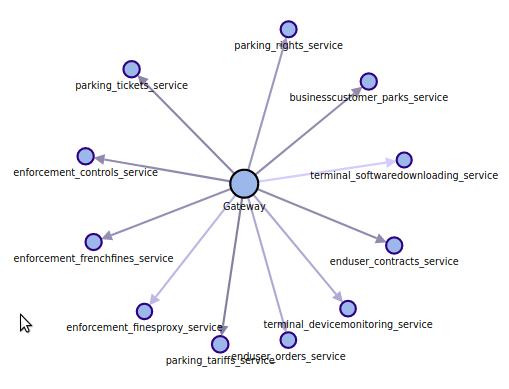
- This is based on finding nodes with the same 'functional name'.
- This functional name is extracted from the node FQDN or the node short name with a regular expression
- Soon to be customizable
- For now: all characters until first '.'
- When the option is active, all nodes with same functional name are merged in a single node, but the features stay the same:
- You can filter on the functional name (all nodes merged)
- You can filter all communications to this functional name
- And what's new:
- You can see how many replicas you have
- And open the replicas one by one in the host view

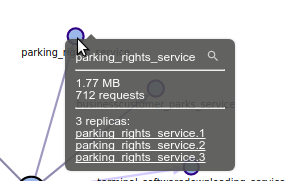
Allan, Aless, please send me a screen shot of this feature active on production! :)

